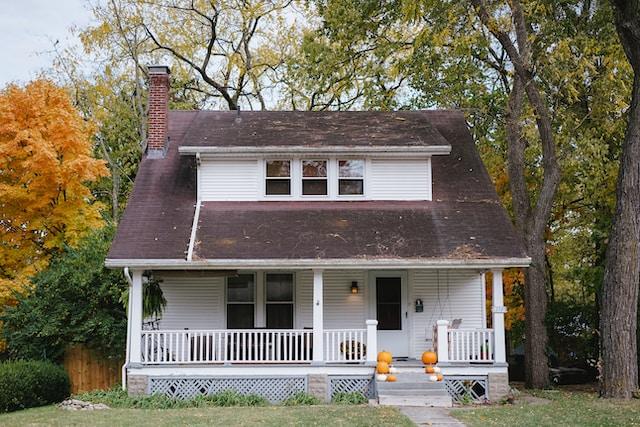Unveiling The Secrets: What Determines Home Inspection Cost?

Structures, including homes, can be deceiving to the untrained eye, appearing robust at a glance while riddled with structural damage and health hazards that compromise habitability. Consequently, home inspections are necessary as they provide a systematic process for evaluating a residential structure’s actual condition.
Home inspections are particularly crucial when buying or selling a home because proof of condition helps sellers set reasonable prices and establish trust among potential buyers. Moreover, both parties can use the inspection report to negotiate the price. Also, a house inspection prevents buyers from investing in a money pit.
So, what is the average home inspection cost, and which factors influence the price? Keep reading to find out.
1. The Parts Of The Home Requiring Inspection
Home inspection features multiple elements within and outside the house structure requiring examination. The internal components include:
- HVAC systems
- Electrical wiring
- Plumbing systems
- Attic
- Basement
- Windows and doors
- Internal wall finishing
- Appliances
- Insulation and ventilation
On the other hand, exterior inspection components include:
- Roof
- Backyard
- Siding
- Driveway
- Foundation and crawl spaces
- Drainage
While the International Association of Certified Home Inspectors (InterNACHI) recommends examining all the above structures as standard practice, the parameters vary depending on the home. For example, homes without attics and basements remove those two spaces from the inspection areas, while condos eliminate most external spaces.
Also, while InterNACHI defines home inspections as a non-invasive and visual examination of accessible areas in residential properties, specialized equipment, and invasive investigations may prove necessary under unique circumstances. The specialized equipment and personnel automatically raise inspection costs.
For example, the stucco inspection cost (for internal and external stucco walls) may rise if an experienced inspector deems it necessary to apply invasive moisture probe sites and collect core samples to evaluate the extent of the damage. Also, a second opinion stucco inspection is essential if a general inspection fails to accurately identify the problem with the stucco finishing, which takes up the price tag.
Therefore, besides the number of areas under inspection, the inspection procedures for specific areas may influence the final inspection price tag. Nonetheless, a thorough inspection saves money on costly repairs in the long run.

Image Source: Pexels.com
2. The Inspector’s Qualifications And Experience
Home inspector qualifications and regulatory requirements vary across states, with most states making pre-licensing training, annual license renewal, and proof of continuous education mandatory. However, some states like California, Colorado, Georgia, Hawaii, Idaho, Illinois, Kanas, Maine, and Minnesota do not regulate house inspectors within their jurisdictions.
Nonetheless, a house inspector’s qualifications and experience portfolio influence their professional fees. House inspectors entering the market may charge lower fees while establishing their practice. Even so, a cheap price tag isn’t always the best, especially in states that do not regulate the house inspection industry.
On the other hand, experienced house inspectors with immense hands-on experience, niche specialization, and updated knowledge of state building codes may charge higher fees. Regardless, ask the inspector questions about their qualifications to determine whether their fees are worth it. Also, read reviews and follow up with referrals to establish their competence, transparency, networks, and areas of specialization.
3. The Home’s Age
Although not an official proclamation, the unspoken rule regarding houses in the US is that a house older than 50 is old; individuals may purchase an older home because it’s more affordable than recently constructed ones or because it has charm and individuality.
Be that as it may, old homes accrue damage over the years, and those features potential buyers typically consider charming may indicate significant structural wear. For example, the wrapped and creaky floorboards synonymous with old houses may indicate foundational damage.
Also, those charming wooden windows often have compromised caulk, cheating an intrusion point for water to leak into the house.
Besides age-related wear and tear, dated fixtures and construction (likely not up to code) warrant closer inspection. For example, old homes with no underfloor or perimeter drainage require closer inspection to ensure the home is not susceptible to water damage. Also, old wiring may be a potential fire hazard, while old pipes may leak contaminants into the house’s water supply.
Old houses typically have hidden problems requiring inspectors to pay closer attention. So, a house’s age may influence how long and intense the inspection takes, which inadvertently affects the final cost.

Image Source: Pexels.com
4. Location
A home’s location may seem insignificant, but it inadvertently influences the final home inspection cost. For starters, while home inspectors primarily price their services based on their competencies, they must consider local rates.
Therefore, a home inspector in a state or county with a more affordable living cost will most likely charge less than one in a metropole with a high living cost. Also, home inspectors may charge higher fees for affluent neighborhoods than low-income areas. Additionally, an inspector will likely charge less for a readily accessible property than an off-grid one that takes more time to access.
Also, the home’s location is more prone to specific hazards due to environmental factors. For example, soil composition influences radon concentration, making some homes more vulnerable to radon-related air pollution. In such instances, specialized inspections, while necessary, affect the total inspection cost.

Image Source: Pexels.com
5. Size
A home’s square footage determines how much time and effort it takes to inspect it. Also, more amenities like multiple bathrooms and appliances means more components to investigate. Consequently, larger family homes with more square footage cost more to inspect than a simple two-bedroom home on a smaller property.
Conclusion:
Multiple factors go into establishing the final home inspection cost, so avoid generalizations and consult an expert to help you establish a working cost estimate. Also, while the charges may appear high, a thorough home inspection enables you to make informed decisions and avoid costly repairs.




